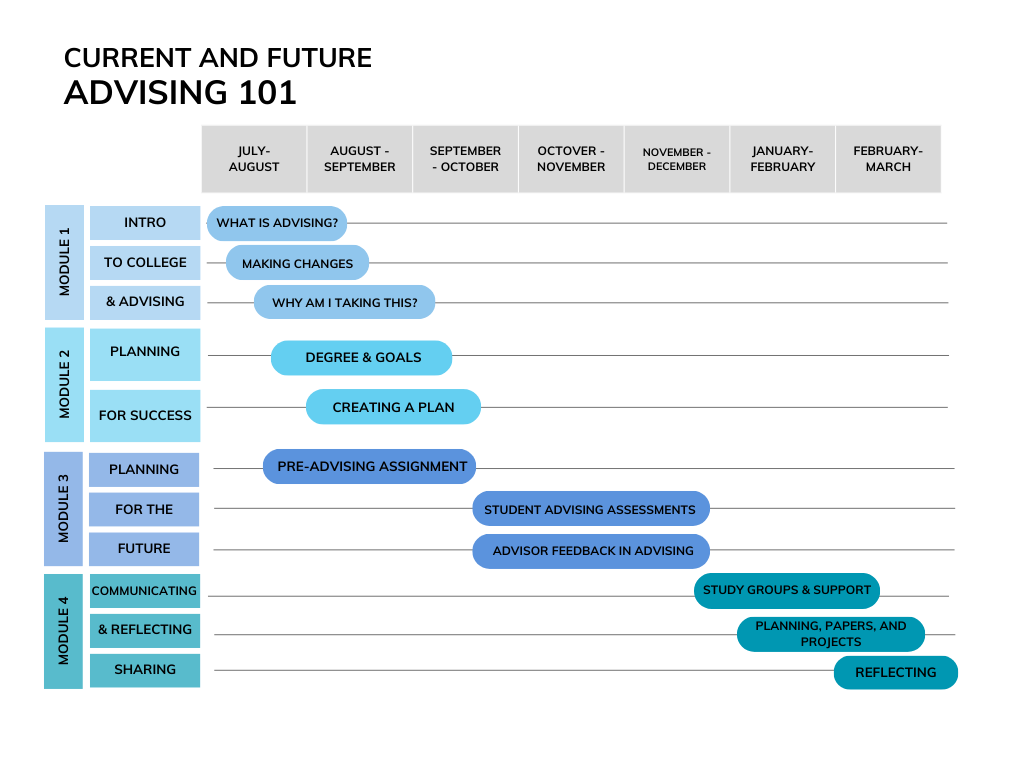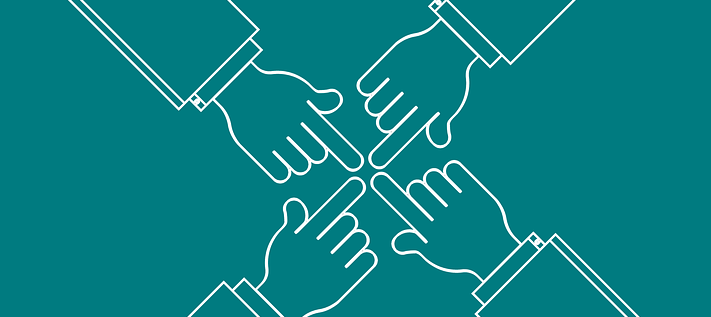
Running my first local 5K race, I experienced what my husband and I now lovingly call 5K-Syndrome.
The Starting Line
Having laid out all my running gear the night before (shoes, clothes, Garmin watch, music player), I was ready to go. It was a crisp September pre-dawn morning in Southeast Texas as I arrived at the designated race location. People were hustling and bustling every which way. I was utterly lost and confused, following one group only to be vaguely pointed in another direction. Over and over again.
It was apparent that everyone there knew exactly where to go, what to do, and when to be where – except me, the newbie.
We are all guilty of living in our little worlds and can forget that others are new to our environments. Higher education is no exception to this syndrome. Just like a first-time racer, learners come to us unsure about many things. Several things our learners are grappling with are much bigger and far beyond just how to navigate our systems.

I cannot help but wonder how many insecure and unsure first-time racers give up before check-in. Not to mention how many might stay in the car, overwhelmed at the prospect of doing something new for the first time.
How many learners feel the same way?
Young adults are trying to figure out who they are and what they want as they transition out of high school—every variation of non-traditional learners, from high schoolers who graduate with associate degrees to post-service veterans. High school dropouts are giving the whole formal education thing another try. People (like me) still carry a childhood label of being “learning disabled.” Adults are making many sacrifices to return to school after many years of lapse in formal education. These learners all come to us with dreams, and “we should tread softly” (TED, 2010).
Powered by Purpose
We (advisors) have an obligation to our learners. We should prepare, inform, and equip our learners to be successful college students and adults. The traditional mandatory advising model with twice annual check-ins for course registration means that we have minimal time windows to provide our learners with vastly unlimited amounts of information. That can be overwhelming. We are covering information on state and university policies and departmental requirements, encouraging relationship building and participation with major programs and classmates, and discussing academic support services while managing any number of case management indicators of risk.
View in Canva
Advising Innovation
Ultimately, my innovation improves the learning experience for both advisors and learners. This innovation can strengthen advising relationships, and I have a well-thought-out plan with multiple strategies to achieve this goal.
Goals and Focus
Advising.blog became my pilot ePortfolio during my daily advising interactions. This digital platform encourages learners to take ownership of their learning journey by providing ubiquitous access to various resources, guides, and tips. These resources scaffold learners by showing them where and how to seek information to encourage active participation.
Utilizing this self-service digital resource, learners experience choice, ownership, and voice (COVA) as they navigate this new (college) and authentic learning environment (Harapnuik et al., 2018). This learning environment teaches them more than meaningless, repetitive conversations with advisors. With consistency, advisors serve as co-navigators, guiding learners through a series of thought-provoking questions that encourage curiosity about learning. With intentionally designed significant learning environments (CSLE), learners can replicate information-seeking and problem-solving when future situations arise in school or life. This approach maintains an authentic focus on learning while increasing active learner engagement. As advisors continue teaching learners how to become autodidactic, they reinforce the unlimited learning opportunities available.
Suppose we completely change the dynamic of the advising relationship. In that case, We can get learners onboarded to the institution and help them reflect on their goals, purpose, and learning opportunities.
Creating Culture
My advising research and learning philosophy confirm that trusted relationships can help learners make meaningful connections in their educational experience. However, the sheer amount of information and the various expectations placed on advisors can limit the relationship-building process. Too often, advisors just transfer information to learners due to their roles and expectations.
Advisors can transform most of the information we repeatedly provide daily into infographics, videos, and other digital media such as blogs, discussion boards, and live chats. An advising resource gives everyone more time to connect during advising appointments. Advisors can leverage the authentic learning opportunity to benefit learners beyond their time at our institutions.
Advising Innovation Project Updates

From changing the world to creating a team
My COVA Learning journey inspired me to help change the world. This drive gave me the professional aspirations to explore opportunities that would allow me to achieve my goal of “changing the world, one learner at a time” (Harapnuik, 2021). I recognize that a great place to start is with the advising team.
In this first year of transition from frontline advisor to leadership, I have built strong relationships within the team. This foundational work will enable us to have crucial conversations that help us all through change. Incorporating Daniel Pink’s “three factors for better performance in the workplace (autonomy, mastery, and purpose),” I desperately want to build a team that is in touch with its purpose (RSA, 2010). Fostering this symbiotic relationship of facilitated discovery and reflection provides a sense of personal fulfillment.
Through the change strategies and implementation plans I have created, advisors can work together while exploring new and challenging tasks. Ultimately, utilizing their skills and interests will leave them feeling fulfilled while also being mutually beneficial to the advising unit and will, in turn, help facilitate their learners’ journey of discovery. Starting from this strong foundation, we will all be in a better position to help one another in the reflection process that answers the “Golden Circle, why,” as described by Simon Sinek (TEDx Talks, 2009).
Ownership for All
The advising unit presents yet another authentic learning environment to apply COVA + CSLE. By helping learners (and advisors) embrace the growth mindset, I believe my innovation idea will help facilitate the ignition (or reignition) of the Learner’s Mindset in everyone around me.
My influencer strategy and professional learning work hand-in-hand to equip advisors to curate informational resources that empower them to create significant learning environments (CSLE) for their advisees. Advisors have control (choice) while being provided ample support and training. Advisors can customize their advising resources to each learning situation or program requirement.

By incorporating the advising resource innovation implementation in a phased/tiered approach by level, the advisors collaborate and explore ePortfolios through an active and ongoing learning experience. As advisors identify one essential thing learners need to know, we can employ backward design to intentionally use our advising resources for learning outcomes.
Future phases of the advising innovation add courses like Advising 101 that continue to supplement learners’ learning stages and scaffold their ever-increasing responsibilities.

View on Canva
My Heart for the Future
I want an advising center that feels like a community. I want learners to walk into an advising center with a team of available and prepared individuals who empower their students. I am passionate about helping advisors cultivate and promote self-efficacy in their learners through extended asynchronous interactions rather than the traditional mandatory course registration advising.
In Big Hairy Audacious Goal (BHAG), the dream big view of the future iterations of the innovation to advising would include adding peer advisors. Through my learning experience, I truly understand the importance of feedforward within trusted relationships. Adding peer advisors to help follow up on tasks or advisor-facilitated group discussions outside of appointment limitations could help keep learners engaged in their experience, especially in critical times of trial or challenge. While my implementation plans create the opportunity for a trusted relationship with advisors, I recognize that peer support and learners’ shared experiences create a bond that can benefit learners. I realize the opportunity and help learning communities and cohorts can bring if we incorporate advisor, peer, and learner collaborations into advising.
Technology and digital tools will humanize relationships. It is up to me to walk the talk and embrace the same vulnerability I opened myself to in the ADL program with people within and beyond the advising unit.
Learning Showcase
All ADL Courses/Projects
ADL Program Contributions
EDLD 5320 Capstone Contributions to Learning
Guest interview on the Learners Mindset
References
Harapnuik, D. (2021, January 8). How to Change the World One Learner at a Time. It’s About Learning. https://www.harapnuik.org/?p=8515
Harapnuik, D., Thibodeaux, T., & Cummings, C. (2018). Choice, ownership, and voice through authentic learning. Creative Common License.
RSA. (2010, April 1). RSA ANIMATE: Drive: The surprising truth about what motivates us [Video]. YouTube. https://www.youtube.com/watch?v=u6XAPnuFjJc
TED. (2010, May 24). Bring on the learning revolution! | Sir Ken Robinson [Video]. YouTube. https://www.youtube.com/watch?v=r9LelXa3U_I
TEDx Talks. (2009, September 29). Start with why — how great leaders inspire action | Simon Sinek | TEDxPugetSound [Video]. YouTube. Retrieved October 22, 2022, from https://www.youtube.com/watch?v=u4ZoJKF_VuA










